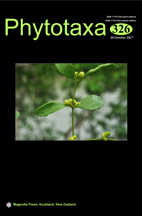Abstract
Agaricus vittadinii Moretti (1826a: 66) is a striking species traditionally ascribed to the genus Amanita Pers. (1797: 65) (Bas 1969; Traverso 1998; Neville & Poumarat 2004). Amanita is one of the most widespread, species-rich ectomycorrhizal genera (Yang 1997; Yang et al. 1999; Neville & Poumarat 2004; Tulloss 2000; Kirk et al. 2008; Tulloss & Yang 2015), characterized by usually agaricoid basidiomata (including sequestrate forms) with a pallid spore print, a hemiangiocarpic schizohymenial development, presence of both universal and partial veils, and usually white and free lamellae (Bas 1969; Neville & Poumarat 2004; Justo et al. 2010). Microscopically, diagnostic characters are amyloid or inamyloid spores, bilateral hymenophoral trama and longitudinally acrophysalidic stipe tissue, which consists of clavate, usually terminal elements, longitudinally oriented on a diffuse system of narrow, branching hyphae (Corner & Bas 1962; Bas 1969; Jenkins 1986; Yang 1997, 2005; Traverso 1998; Neville & Poumarat 2004).

